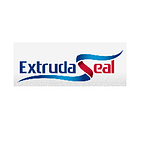A brief guide to extruded rubber products
Here we explain the popularity and uses of extruded products and offer a brief overview of the extrusion process for standard and custom sealing profiles.
Why are extruded rubber products so popular?
Because synthetic rubber is versatile, resilient and highly malleable it is used in the majority of industrial applications and compounds, especially those requiring shock absorption, sealing and fluid transportation.
A range of rubber processing methods exist, but extrusion remains the most commonly used by larger scale manufacturers as it offers a neat and uniform way to produce rubber products economically. Because synthetic rubber is such a workable material it can be put to use in a great variety of shapes and crafted and moulded for pretty much any industrial need.
What can extruded rubber products be used for?
Because rubber materials offer great resilience and flexibility they can be used to manufacture a wide variety of extruded parts including pipe clamps, sleeves, door seals, bumper pads, tubes and window gaskets.
Owing to this expansive range of potential uses, extruded rubber profiles are used in an increasing number of industries, from aerospace, automotive, and construction to marine, medical and general industrial applications.
So, how are extruded rubber products manufactured?
Put simply, Extrusion allows manufacturers to mass produce rubber products in pre-designed shapes, ranging from simple moulds to more complex profiles such as those used for windows and vehicles.
The extrusion process is a reasonably straight-forward one. Rubber pellets or strips are fed into a feed hopper and carried by rotating screws into a closed barrel. As the friction between the flowing compound and the wall causes the temperature to rise, the rubber starts to melt.
Once it has fully melted and has flowed around the screws, the melted rubber is filtered into a shaped die cast where it will adopt the shape of the mould and set.
The rubber then emerges from the extruder in a profile resembling the die shape and can be cured using various methods that can include salt bath, autoclave, hot air and microwave.
To find out more about the capabilities of extruded rubber and our wide range of related products, contact the friendly team at Extrudaseal on 0121 356 8733.
